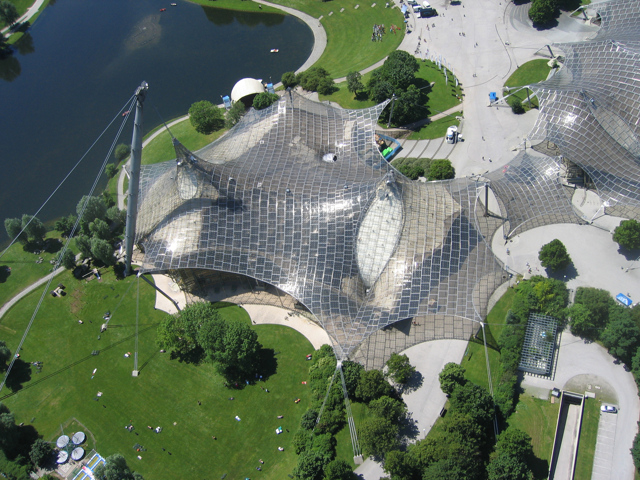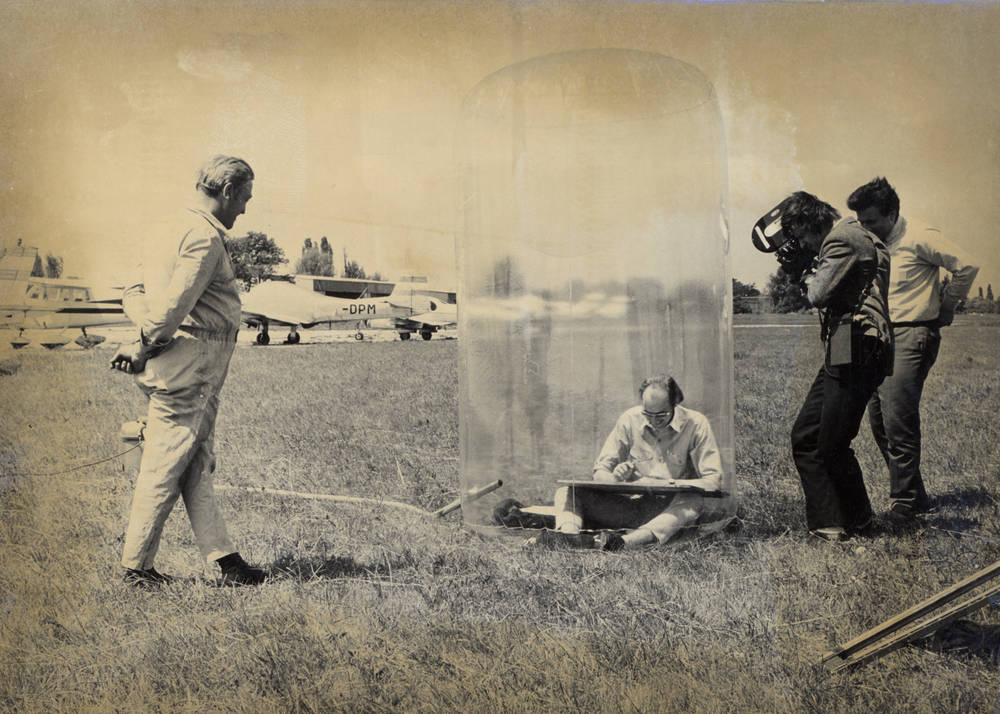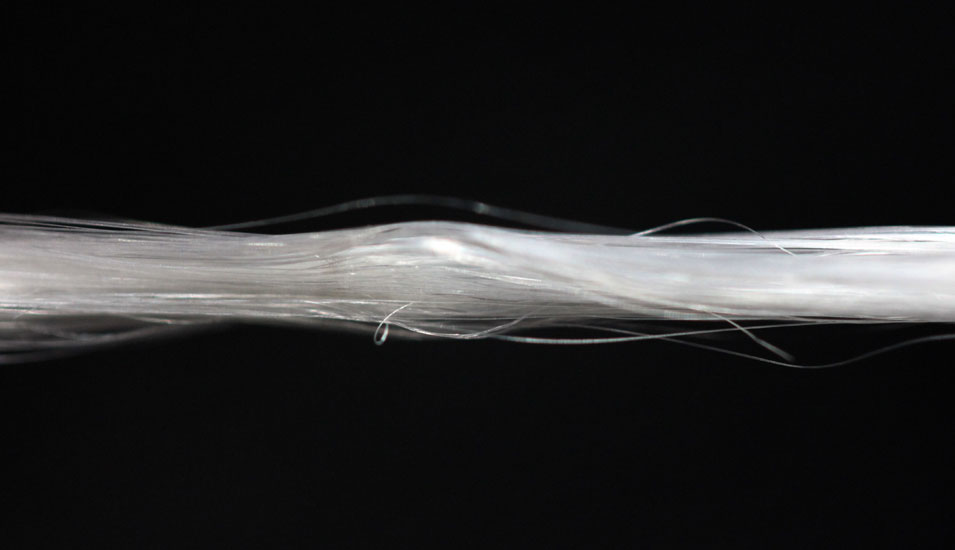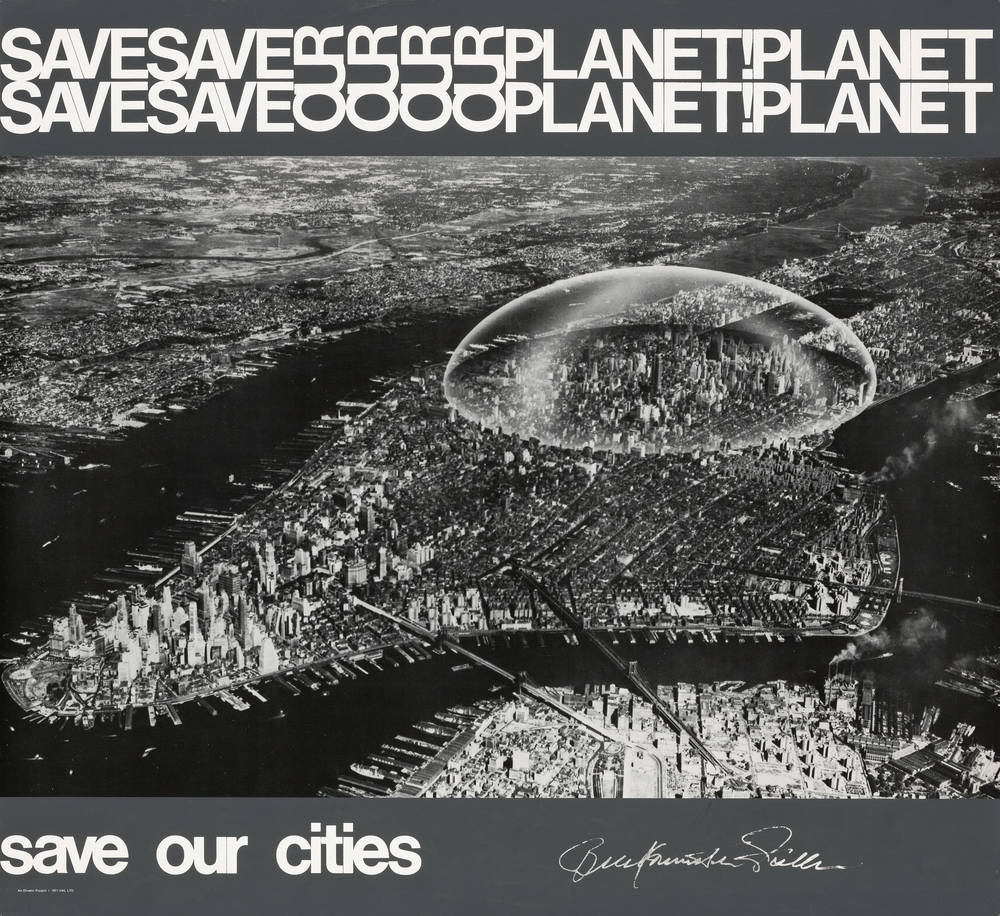For a long time, plastic was considered a universal and democratic material that was revolutionizing the world of architecture, too. But at a time when sustainability and environmental awareness are increasingly important, there is a need to find more ecologically sustainable building materials and solutions.
Architecture would be inconceivable without the aspects of researching new materials and methods and exploring experimental approaches and progressive (spatial) concepts. In the development of plastics and the exploration of possible areas of application, too, architects and engineers have been courageous and often playful in breaking new ground.
This is clearly evident in the international industrial and art exhibitions, the world expos and fairs, where the latest building materials and current developments in the art of engineering have always been proudly presented. With a few exceptions, the utopias shown there did not go into (mass) production, but they are nevertheless part of our real environment. One only has to think of the tent-like roof structure for the Olympic Stadium in Munich designed by Frei Otto and the Stuttgart architects Behnisch und Partner, which was completed in 1972. Frei Otto had been working on sustainable, resource-conserving, and energy-efficient construction since the 1950s, conducting basic research that would influence the profession in the decades to come. While Frei Otto still focused on nature as a reference for his works using conventional building materials – the Munich roof structure was inspired by spider webs, soap bubbles, and diatoms – the common feature of the subsequent generation of architects was their fascination with technology and space travel and the fact that they tried out their ideas in installations and self-conducted experiments.

Frei Otto and Behnisch & Partner, Olympiastadion Munich, Image via commons.wikimedia.org

Frei Otto and Behnisch & Partner, Olympiastadion Munich, Image via professionearchitetto.it
Experiments with mobile structures made of plastic in the Space Age
Thus, Coop Himmelb(l)au, Hans Hollein, and Haus-Rucker-Co expanded the concept of architecture in the 1960s and dissolved the boundaries between disciplines. With their designs and installations, they called for a democratic architecture that is flexible, adaptable, and interactive. Inspired by the forward-looking and tech-savvy zeitgeist of the space age, they experimented with mobile and portable structures that allow people to use space in new and individual ways: “Architects have to stop thinking only in terms of buildings!” exclaimed Hans Hollein, for example, whose “Mobile Office” offered an inflatable space that would allow temporary work anywhere. At the time,
Hollein and his contemporaries showed how architecture could be revolutionized through the use of plastics. From the 1960s to the 1980s in particular, when plastic found its way into modular and prefabricated mass housing, it was the ideal material: versatile, durable, cheap to produce and distribute – and hence downright democratic. These days, we are well aware of the downsides, but despite this, 65 million tons of plastic are still consumed by the construction industry every year. Yet there are already alternatives: Researchers, architects, and designers have developed innovative methods that could shape the future of architecture. These projects combine ecological compatibility with aesthetic diversity and open up new perspectives for the sustainable formation of our built environment.

Architects have to stop thinking only in terms of buildings!
Mush-room for the good life?
The discovery of the potential of fungi as a building material has particularly caught the attention of the architectural industry. The mycelium – a dense network of fungal roots – can be used in combination with plant materials to produce robust composite materials. This is because fungi are special living organisms with a body consisting of many small individual threads that form the so-called mycelium. Depending on the type of fungus, this can live, spread, and grow on a wide variety of materials – from coffee grounds to soil.
Unlike plastic, which takes centuries to decompose, fungus-based materials can be composted at the end of their life. And production also requires less energy and resources than for conventional building materials. The fact that utopias like this can become reality is demonstrated by “MY-CO SPACE,” an experiential space designed for two people by MY-CO-X, a collective founded in 2020. The wooden construction with mushroom panels was already put to the test two years ago in the context of tinyBE in Frankfurt: According to the creators, the space, which is about 20 square meters in size and can be used for sleeping and working, is also an answer to the increasing nomadism of many people who will probably have to live and work increasingly under conditions of limited resources in the future. The use of fungus could therefore result in a lightweight and fully circular building system that meets the changing requirements of the construction industry.

MY-CO SPACE by MY-CO-X © tinyBE #1, photo: Wolfgang Günzel, Image via tinybe.org

MY-CO SPACE by MY-CO-X © tinyBE #1, Foto: Wolfgang Günzel, Image via tinybe.org
Spider silk – a natural “super-fabric”
And that’s not all: Another “super-fabric” from nature could soon play a revolutionary role in the future of the construction industry. Lighter than steel but more tensile than any other natural or synthetic material, we know it as spider silk. At speeds of up to one meter per second, the tiny animals spin their silk threads to build webs and abseil – a phenomenon that has fascinated humans for decades. The material, which is made of long protein molecules, has properties that man-made artificial and construction materials cannot match. Scientists around the world are trying to unlock the secrets of spider silk, and although they have already cracked the genetic code of spider silk and know the chemical composition of the threads, they still lack the “recipe” for an industrial manufacturing process that would enable the production on scale of large quantities. In the laboratory, bacteria take over production of the imitation fiber, which is water-repellent, anti-inflammatory, hypoallergenic, and biodegradable – and thus has properties that are also of interest to the fields of medicine, cosmetics, and fashion. Processed into spider silk concrete, it could even offer a way to solve the major construction tasks of the future, such as earthquake-resistant building. What a ray of hope!

Spider web, Image via commons.wikimedia.org

Synthetic spider silk (c) dpa, Image via forschung-und-lehre.de
In conclusion, one may ask: Utopian architectural concepts – what are they good for? The field of architecture has never been lacking in vision. Rather, it has always contributed to driving developments forward, sounding them out, finding solutions. Even if the plastic obsession among architects of the Space Age was not expedient from today’s perspective, plastic did pave the way for innovation back then. Now it is up to today’s architects and civil engineers to break away from plastic as a building material for the long term and find answers to the ecological challenges of our time. The projects illustrate the enormous potential of sustainable materials and methods. They not only offer practical solutions, but also offer new aesthetic opportunities for forging links between people, nature, and the built environment. And perhaps soon we’ll find ourselves with “mush-room for the good life”…










